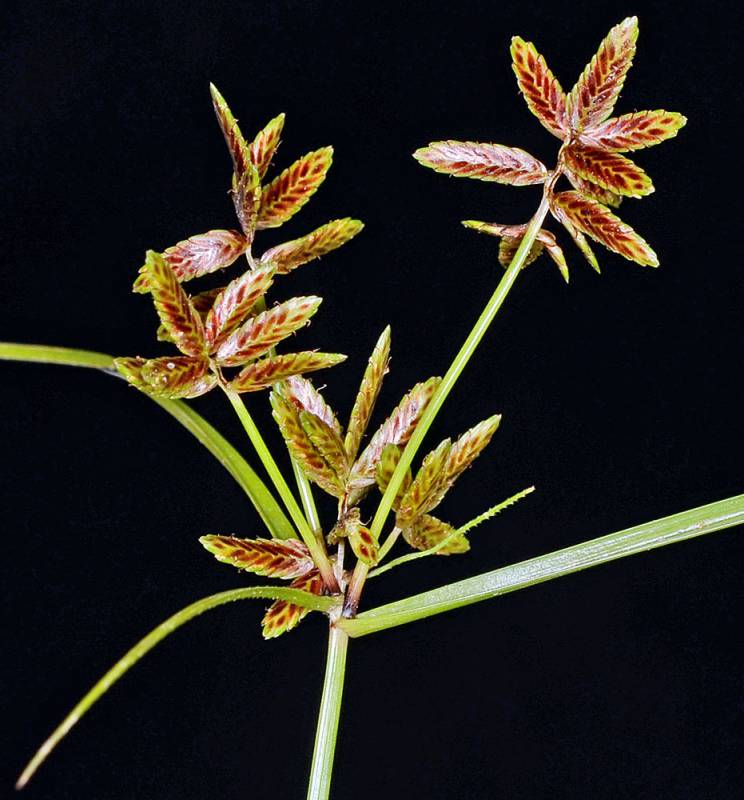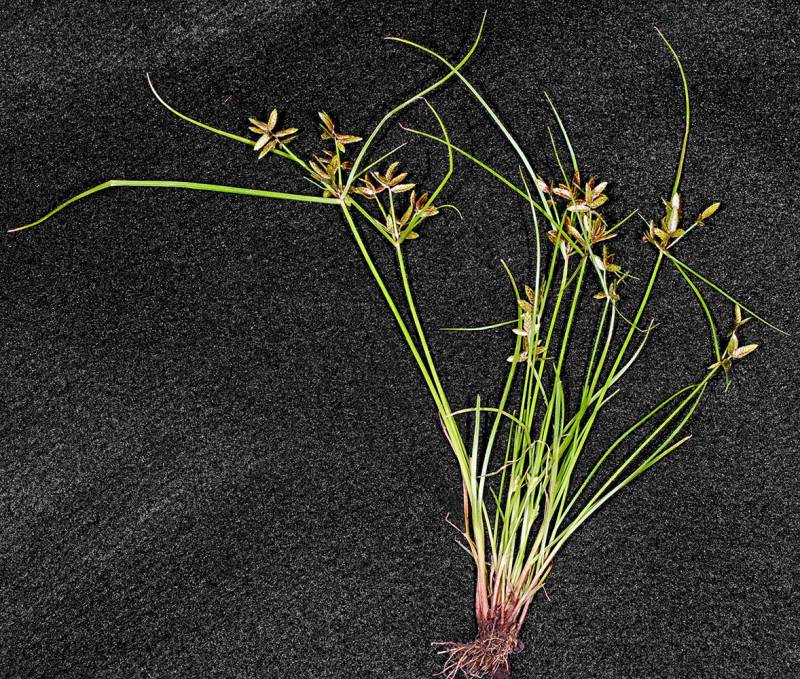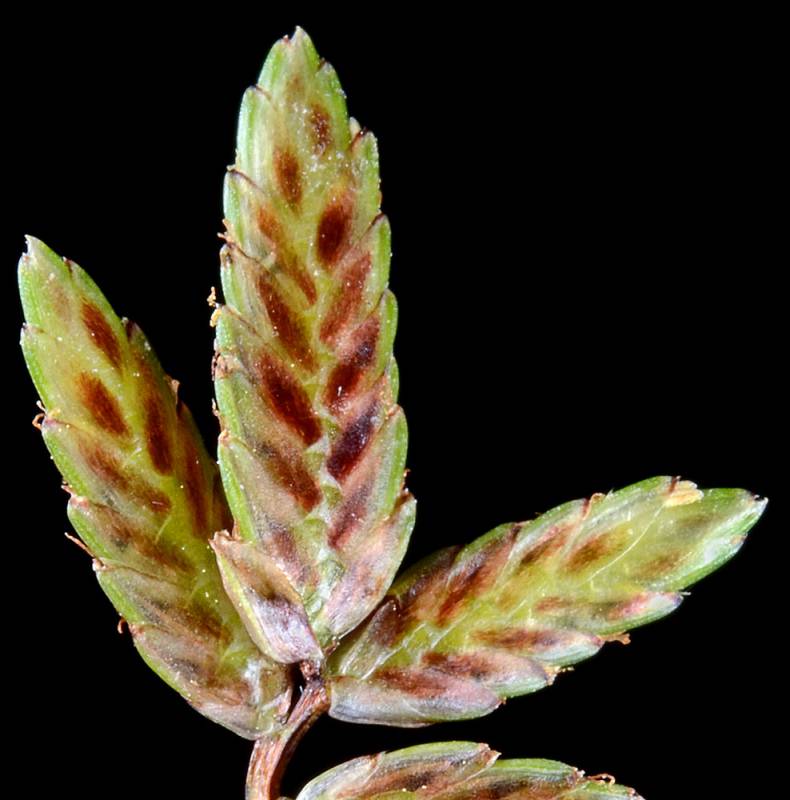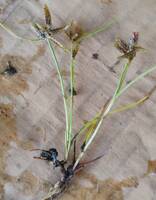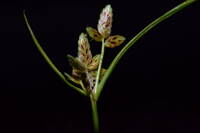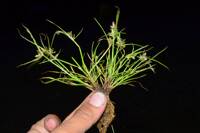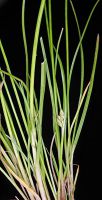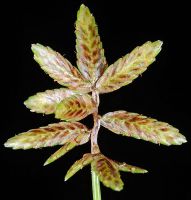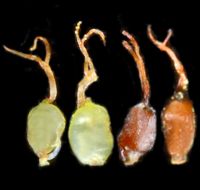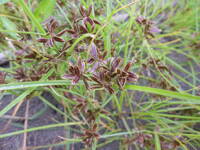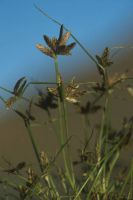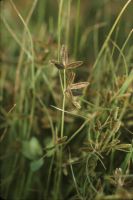Distribution: Occurring on both sides of the Cascades crest in Washington; Washington to California, east across most of the U.S. to eastern Canada and the Atlantic Coast.
Habitat: Streambanks and other wet places in the valleys and lowlands; tolerant of alkali.
Flowers: June-August
Origin: Native
Growth Duration: Annual
Conservation Status: Not of concern
Pollination: Wind
Tufted annual, the triangular, solid, slender stems 0.5-2 dm. tall.
Leaves few, grass-like, all attached near the base, slender and elongate, 0.5-2 mm. wide, the sheaths closed.
Inflorescence of spikelets in 1-several capitate clusters, the primary cluster sessile, the others on slender rays up to 3 cm. long in the axils of sheathless, leafy, unequal involucral bracts, at least one surpassing the inflorescence; spikelets 3-15 mm. long; scales of the spikelets in 2 vertical rows, 2-2.5 mm. long, blunt, with a pale mid-rib; perianth none; stamens usually 2; style deeply bifid.
Achenes lenticular, 1.0-1.3 mm. long, olivaceous to blackish.
Publication: Ann. Lyceum Nat. Hist. New York. 3: 257. 1836. 1836.
Cyperus rivularis Kunth [HC]
PNW Herbaria: Specimen records of Cyperus bipartitus in the Consortium of Pacific Northwest Herbaria database
WA Flora Checklist: Cyperus bipartitus checklist entry
OregonFlora: Cyperus bipartitus information
E-Flora BC: Cyperus bipartitus atlas page
CalPhotos: Cyperus bipartitus photos

